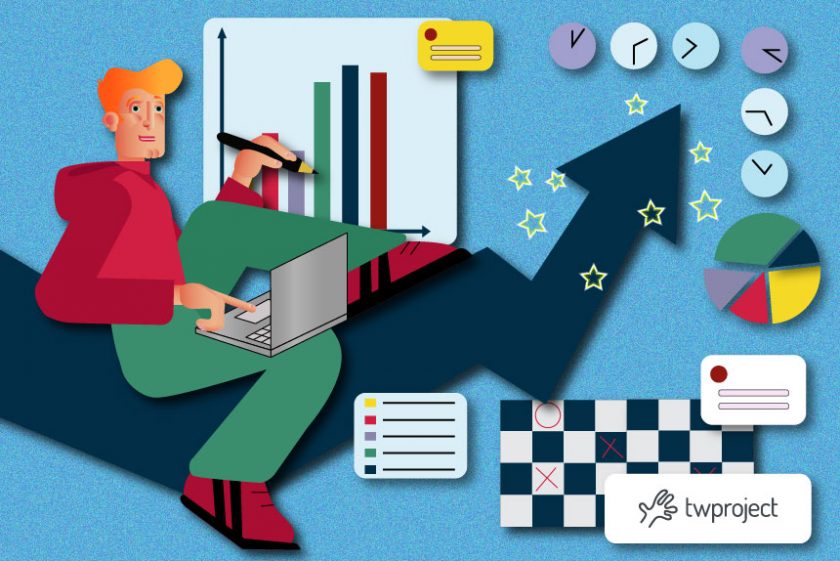Working on a project without project planning is like sailing the seas without a radar.
There are many dangers of not sticking to a project plan, and the risk of the vessel becoming shipwrecked becomes dangerously real.
Having a project plan helps ensure stakeholders have a shared perspective and clear and achievable goals, and establish an open and transparent channel for communication.
So what exactly is project planning? How can it help a team successfully plan a project? Let’s take a deeper look at it in this article.
CONTENT
What is project planning?
Project planning means defining each project phase’s goals, scope, milestones, budget activities, and resources.
In other words, it is a document outlining the steps the team should follow to complete their project.
A good plan can be easily shared and understood with and by everyone concerned.
The concept behind project planning is to serve as a roadmap that shows all the steps and resources that need to be taken into account when trying to complete a project on time and within budget.
5 steps to plan for project success
1. Background research and planning
Before writing a single entry in your project plan document, you must do some preparatory work.
The best action plan is to research and know the facts before engaging in individual activities.
This includes:
- Measuring the scope of your project and its value: this means understanding the ins and outs of your project: what the goals and potential outcomes will be, what partnerships you would need to strengthen to get the work done, and any potential risks or problems that might occur.
- Interviewing stakeholders: to accurately represent what the final product of your project will look like, you need to know what your stakeholders will be expecting. Defining product ownership and decision-making, their levels of involvement, and driving factors with them becomes necessary. This will give project stakeholders greater trust in you and your team. It also shows stakeholders that you care about the success of your project.
- Knowing your team: the last step before effectively moving on to project planning is to take some time to meet and connect with team members. Each team member is important, so knowing their experience, interests, availability, and workload helps shape a thoughtful plan.
2. Draw up a draft of the project plan
After you have collected all the information during the previous phase, it is time to start sketching out a draft project plan.
There are two primary goals you should achieve at this stage to ensure that your work will be successful:
- Note down the main elements of your project plan: write down the who, what, when, and how of your project.
- Include your team’s input in your draft: once you have noted the basic needs of your project plan and how they will be met, it is time to involve your team in the drafting process. Promote active communication with your collaborators and determine how long it will take to achieve the planned objectives. Communication is key to achieving project success, so make sure everyone can get things done without putting the project at risk.
3. Project plan creation
Now that you’ve laid the groundwork for project planning, it’s time to build it.
A great way is to use planning tools such as Twproject.
Through this tool, you can clearly outline tasks, their duration, milestones, allocated resources, and budget using a Gantt chart.
Flexibility is also crucial, as any project plan could be subject to change during the work cycle.
Twproject makes it easy to make changes to your project plan without losing track of progress, dependencies, and the impact each change may have on your project’s future.
4. Plan presentation and confirmation
Now is the time to officially submit your project planning to stakeholders and team members.
This will help ensure everyone is on the same page before the actual work begins.
5. Project execution and route correction
Now, the actual work officially begins. But it doesn’t end there!
Project planning is like a living document that needs regular updates and route corrections.
Some good tips to keep in mind for this phase are:
- Always communicate with your project team and stakeholders at all times
- Update your project plan when things change
- Monitor risks as your project evolve
Therefore, it is clear how critical it is to invest time in a project planning process to ensure a successful strategy.
Planning does not have to be complicated, it only needs to be well implemented to become effective.
With proper planning and effective action implementation, your team will be on its way to success.
Yet, drafting good project planning does not guarantee that your project will proceed as planned.
Despite all the project planning, uncertainty is always around the corner.
Hence, the key to achieving excellent results is recognizing that thoughtful project planning is key to reducing risk and increasing success.
A project manager alone is unlikely to succeed. Still, with the help of good project management software such as Twproject, you can draft effective project planning that can be shared and is flexible in case of modifications.



